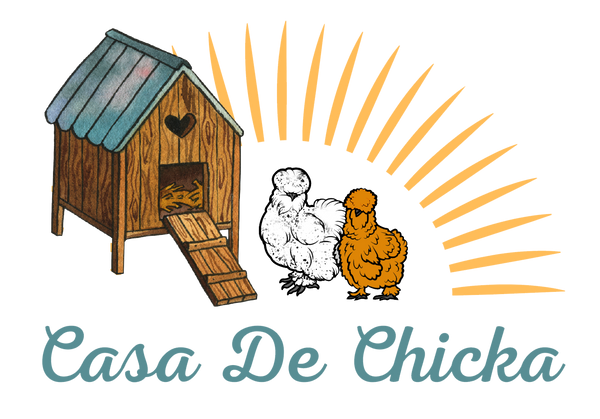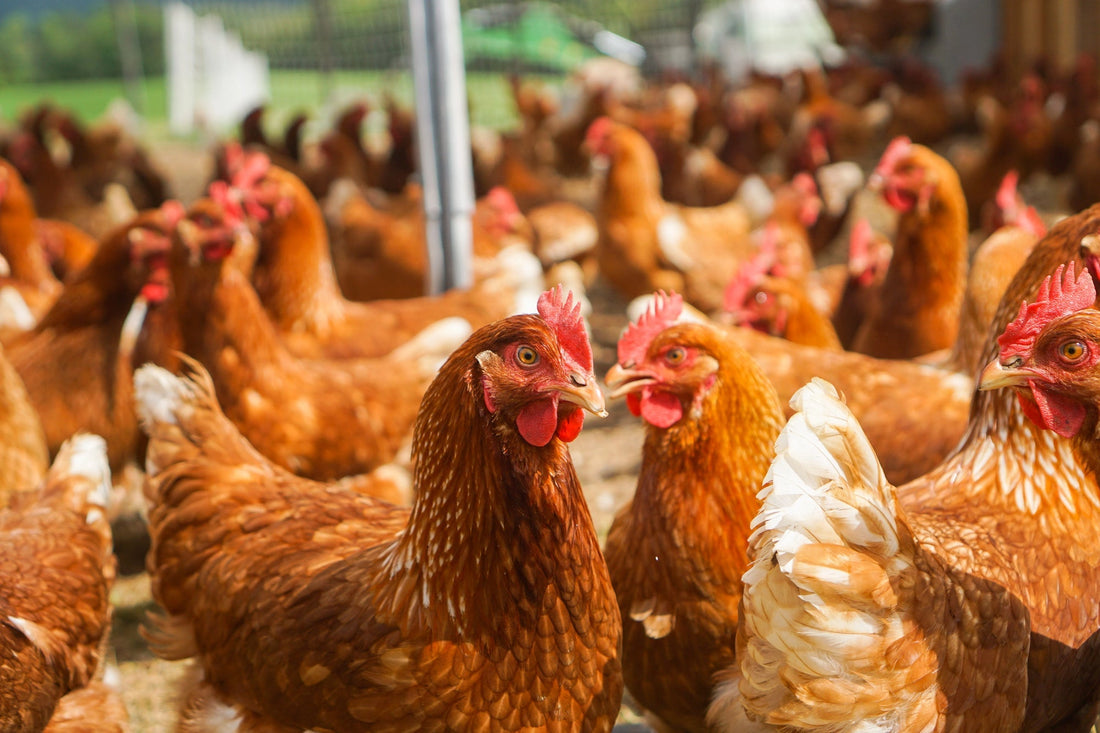Raising backyard chickens can be a rewarding experience, providing fresh eggs, natural pest control, and even companionship. However, backyard flock owners must also take the responsibility of protecting their birds from diseases, particularly Avian Influenza, commonly known as bird flu. Bird flu is a highly contagious viral infection that affects both domestic and wild birds, and in some cases, it can even pose risks to humans. Understanding how the virus spreads and implementing strict biosecurity measures can help keep your flock safe. This guide will cover practical steps to minimize the risk of infection and safeguard your chickens from Avian Influenza.
Understanding Bird Flu and How It Spreads
Bird flu is caused by various strains of the Avian Influenza Virus (AIV), categorized into two types:
-
Low Pathogenic Avian Influenza (LPAI): This form typically causes mild symptoms but can still weaken the immune system and affect egg production.
-
Highly Pathogenic Avian Influenza (HPAI): This is the more severe form, often fatal to chickens, and spreads rapidly through flocks.
The virus spreads through direct and indirect contact with infected birds, their secretions, and contaminated surfaces.
Common Ways Bird Flu Spreads:
-
Wild Birds and Waterfowl: Ducks, geese, and other wild birds are natural carriers of Avian Influenza. They may not appear sick but can shed the virus in their droppings, contaminating water sources and soil.
-
Contaminated Surfaces and Equipment: Feed, water containers, and farm tools can harbor the virus if not cleaned properly.
-
Airborne Transmission: The virus can travel short distances in dust particles or respiratory secretions, particularly in overcrowded conditions.
-
Human-Mediated Transmission: Farmers and backyard chicken keepers can unknowingly spread the virus through contaminated clothing, shoes, and hands.
-
Newly Introduced Birds: Adding new birds to your flock without quarantine increases the risk of introducing the virus.
Now that we understand how bird flu spreads, let’s dive into practical biosecurity measures to keep your flock safe.
Step 1: Strengthen Your Coop’s Biosecurity
Biosecurity refers to preventative measures taken to protect poultry from infectious diseases. Here’s how to enhance your flock’s defense against bird flu:
1.1. Restrict Wild Bird Access
-
Cover outdoor runs with bird-proof netting to prevent contact with wild birds.
-
Keep feed and water sources covered and elevated to reduce the chances of contamination by wild birds.
-
Use motion-activated deterrents like reflective tape or scare devices to discourage wild birds from visiting your property.
1.2. Implement a “Closed Flock” System
-
Avoid bringing in new birds unless absolutely necessary.
-
If you must introduce new chickens, quarantine them for at least 30 days and monitor for signs of illness.
-
Do not share equipment or birds with other poultry owners to reduce cross-contamination.
1.3. Maintain a Clean Environment
-
Regularly clean and disinfect the coop, nest boxes, and all poultry equipment.
-
Remove spilled feed, which can attract wild birds and rodents that may carry disease.
-
Dispose of chicken waste properly to prevent contamination.
Step 2: Limit Human-Mediated Transmission
Many poultry keepers unknowingly spread diseases by failing to follow proper sanitation protocols. Here’s how to minimize human-mediated transmission:
2.1. Sanitize Clothing and Footwear
-
Designate a pair of boots and clothing specifically for tending to your chickens.
-
Use footbaths with disinfectant at the entrance of your coop to clean footwear before and after entering.
-
Wash your hands thoroughly before and after handling your chickens or their eggs.
2.2. Limit Visitors
-
Do not allow unnecessary visitors into your chicken coop.
-
If you must have visitors, ensure they wear clean clothing and disinfect their hands and shoes before entering.
-
Avoid visiting other poultry farms, as this increases the risk of carrying contaminants back to your flock.
Step 3: Monitor Your Flock for Signs of Illness
Early detection is key to preventing the spread of bird flu. Regularly check your flock for symptoms such as:
-
Sudden death with no obvious cause
-
Swelling of the head, neck, or eyes
-
Purple discoloration of the comb and wattles
-
Lethargy, decreased appetite, or reluctance to move
-
Respiratory distress, coughing, or sneezing
-
Drop in egg production or soft-shelled eggs
-
Diarrhea or unusual droppings
If you notice any of these signs, immediately isolate the sick bird and contact your local veterinarian or agricultural authority for guidance.
Step 4: Prepare for an Outbreak
Even with the best biosecurity measures, outbreaks can still occur. Being prepared in advance can make all the difference in minimizing losses.
4.1. Establish a Response Plan
-
Identify a quarantine area where sick birds can be isolated from the rest of the flock.
-
Keep emergency supplies like disinfectants, gloves, and protective clothing on hand.
-
Educate all family members on proper handling procedures in case of an outbreak.
4.2. Follow Government Guidelines
-
Many regions have mandatory reporting laws for suspected cases of Avian Influenza. Stay informed about local poultry health regulations.
-
Be aware of culling policies that may be enforced in severe outbreaks to prevent the spread of the virus.
Step 5: Vaccination and Additional Protective Measures
In some areas, vaccines for certain strains of Avian Influenza may be available for poultry. However, their effectiveness varies, and vaccination is not always a guaranteed solution. If vaccines are an option in your region, consult with a veterinarian to determine if they are suitable for your flock.
Additionally, maintaining strong overall flock health helps improve resistance to infections. Provide your chickens with:
-
A nutrient-rich diet to support their immune system.
-
Access to clean water at all times.
-
Proper ventilation in the coop to prevent respiratory diseases.
Protecting your backyard flock from bird flu requires vigilance, dedication, and proactive measures. By implementing strict biosecurity protocols, monitoring for signs of illness, and preparing for potential outbreaks, you can greatly reduce the risk of Avian Influenza impacting your chickens.
While no method is 100% foolproof, a combination of proper coop management, sanitation practices, and limited exposure to outside risks will go a long way in ensuring your flock remains healthy and productive.
By staying informed and practicing good flock management, you can enjoy the many benefits of raising backyard chickens without the constant worry of Avian Influenza.
Would you like more updates on Avian Influenza risks and prevention? Subscribe to our newsletter for the latest poultry health updates!

